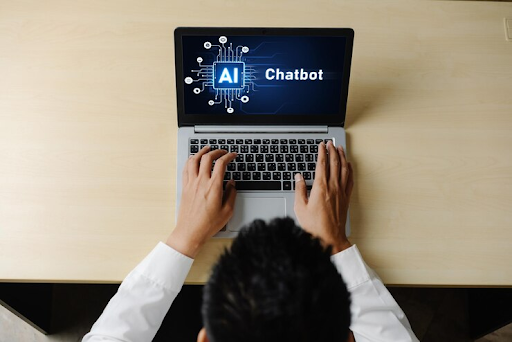Did you know that nearly 70% of students struggle with effective study techniques? It’s a staggering number that highlights the challenges many face in mastering their learning. Whether you’re cramming for exams or trying to grasp complex concepts, finding the right study methods can make all the difference. In this post, we’ll dive into practical strategies and tips that can enhance your study sessions. Get ready to transform your approach and boost your academic performance. Let’s unlock the secrets to studying smarter, not harder.
Role of AI in Education
Personalized Learning
AI transforms learning experiences through personalized content delivery. It analyzes individual student data to tailor lessons. This approach addresses unique learning styles and paces. For example, platforms like DreamBox Learning adjust math problems based on student responses. Students receive challenges suited to their skill levels, enhancing engagement.
Real-Time Feedback
AI facilitates real-time feedback for both students and educators. Tools like Gradescope allow instructors to provide instant assessments on assignments. Students can see where they excel or need improvement immediately. This immediate response helps them adjust their study habits quickly. It also aids teachers in identifying common areas where students struggle.
Data Analytics
AI integrates data analytics to track student progress effectively. Systems can gather vast amounts of data over time. Educators can then analyze this information to adapt teaching methods accordingly. For instance, platforms like Knewton provide insights into class performance trends. Teachers gain a clearer picture of what works and what doesn’t, allowing for informed adjustments.
Benefits of AI Study Buddies
Instant Explanations
AI study buddies provide instant explanations for complex topics. Students can ask questions and receive immediate answers. This feature enhances understanding and keeps learners engaged. For example, platforms like Khan Academy use AI to clarify difficult concepts in real-time.
Consistent Reminders
AI tools help establish consistent study habits. They offer reminders and scheduling tools that keep students on track. By setting daily study goals, students can create a routine. Regular notifications encourage discipline and reduce procrastination.
Tailored Learning
AI study buddies support diverse learning styles through tailored study plans. They analyze individual performance and adapt materials accordingly. Some students grasp concepts better through visual aids, while others prefer text-based resources. AI can customize content to meet these varied needs, ensuring effective learning.
Rise of AI Study Buddies
The rise of AI study buddies reflects a shift in educational methods. Schools increasingly integrate technology into learning environments. Reports indicate that AI tools improve student performance by personalizing education. In 2021, studies showed that students using AI study aids scored higher on assessments than those without access.
How AI Chatbots Work
Natural Language Processing
AI chatbots utilize natural language processing (NLP) to understand student inquiries. This technology allows chatbots to interpret and respond to questions in a conversational manner. By analyzing the context and intent behind queries, chatbots provide relevant answers. For example, if a student asks about a specific topic, the chatbot can deliver precise information quickly.
24/7 Assistance
Chatbot technology offers 24/7 assistance, making learning accessible anytime. Students can engage with chatbots outside of traditional classroom hours. This flexibility supports different learning styles and schedules. For instance, a student studying late at night can ask questions and receive immediate feedback without waiting for a teacher’s response.
Learning from Interactions
Chatbots learn from interactions to improve responses over time. Each conversation helps refine their understanding of common queries and user preferences. As they gather data, they enhance the user experience by providing more accurate answers in future interactions. Famous chatbots like ChatLabs demonstrate this capability effectively in educational settings.
Benefits in Education
AI chatbot software plays a significant role in education. It assists students with homework, clarifies concepts, and offers study tips. Chatbots in learning environments create an interactive experience that encourages engagement. Students benefit from personalized support tailored to their needs.
Practical Tips for Using AI
Reliable Tools
Many AI tools can enhance your study experience. Tools like Grammarly assist with writing, while Quizlet helps with memorization through flashcards. These resources align well with educational goals. They provide instant feedback and adapt to your learning style.
Daily Integration
Incorporate AI into your daily study routines. Set specific times for using these tools. For instance, use a language learning app for 15 minutes each day. This consistent practice builds habits and enhances retention. Pairing AI tools with traditional methods can also yield better results.
Progress Monitoring
Monitor your progress regularly. Check how well you understand the material after using AI tools. Adjust your usage based on individual needs. If a particular tool isn’t effective, try another one that suits your style better. Keeping track of your performance helps you stay focused on your goals.
Using AI in education requires thoughtful integration. Choose the right tools, incorporate them effectively, and monitor your progress to maximize benefits.
Enhancing Homework with AI Tools
Personalized AI Tutor
Many students benefit from a personalized AI tutor. This technology tailors learning experiences to individual needs. It can assess a student’s strengths and weaknesses. Then, it adjusts the material accordingly. This customization helps students grasp difficult concepts more easily.
Smart Tutor
A smart tutor can automate repetitive tasks. Research and data collection become faster and easier. Students spend less time on mundane tasks. They can focus more on understanding the subject matter. This efficiency leads to better learning outcomes.
Instant Feedback
Receiving instant feedback is crucial for improvement. AI tools provide immediate assessments on quizzes and assignments. Students learn where they went wrong right away. This quick response encourages them to correct mistakes before moving forward.
Custom AI Assistants
Custom AI assistants serve as ultimate study assistants. They offer suggestions for improvement and alternative solutions. When students struggle with a problem, these tools suggest different approaches. This guidance helps develop critical thinking skills.
Virtual Tutors
Virtual tutors create interactive assignments that engage students more deeply. These assignments often include multimedia elements like videos or quizzes. Such content keeps students interested and motivated to learn.
Engaging Learning Beyond Traditional Methods
Gamification Elements
Incorporating gamification elements into lessons can transform the classroom experience. Game mechanics, such as points and rewards, motivate learners. They create a sense of achievement. This approach fosters engagement and encourages participation in personalized learning experiences.
Virtual Reality
Using virtual reality and simulations can enhance understanding. These tools provide immersive experiences that traditional methods cannot replicate. Learners can explore complex concepts in a virtual environment. For example, a biology class can simulate the human body, allowing students to visualize anatomy dynamically. This method unlocks their full learning potential.
Collaboration Platforms
Fostering collaboration through online platforms is essential. Group projects allow learners to work together, even remotely. They can share insights and resources easily. This interaction builds a community of learners who support each other. It creates an effective learning environment where everyone contributes.
Educational Technology
Educational technology plays a crucial role in modern classrooms. Tools like interactive whiteboards and educational apps enhance lesson planning. They make learning content more accessible and engaging. Personalized learning experiences become more effective when technology is integrated thoughtfully.
Impacts on Students and Teachers
Student Engagement
Student engagement rises when teachers use technology effectively. Tools like AI can automate administrative tasks. This reduces the workload for educators. Teachers can focus more on lesson plans and student interactions. Engaged students participate actively in their learning journey.
Student Learning
Student learning improves through personalized experiences. Empowering students with self-directed learning opportunities is crucial. They can explore concepts at their own pace. This approach supports diverse learning styles. It encourages students to take ownership of their education.
Classroom Collaboration
A collaborative environment enhances classroom dynamics. Students benefit from working together with peers and technologies. Teaching assistants and tutors can facilitate this process. They provide additional support, ensuring all students understand the material. Collaborative projects foster teamwork and critical thinking skills.
Assessment Outcomes
Effective student assessment measures progress accurately. Educators can utilize data analytics to track outcomes. This information helps tailor instruction to meet individual needs. By understanding where students struggle, teachers can adjust lesson plans accordingly.
Changing Learning Approaches with AI
Shift in Focus
Education now emphasizes critical thinking over rote memorization. AI tools encourage students to analyze, evaluate, and create rather than just recall facts. This shift helps develop deeper understanding and problem-solving skills.
Adaptive Learning
Adaptive learning paths are becoming popular. These methods cater to each student’s unique progress. With AI, educators can track performance in real-time. They can provide personalized resources and support. This approach helps students learn at their own pace.
Classroom Dynamics
Technology integration transforms classroom dynamics. Teachers use AI-driven platforms to facilitate discussions and collaboration. Students engage more actively with interactive content. This method fosters a collaborative environment. It encourages teamwork and communication skills.
AI also provides instant feedback, allowing for immediate adjustments in teaching strategies. Educators can identify areas where students struggle and adapt lessons accordingly. This responsiveness creates a more effective learning atmosphere.
Incorporating these new strategies leads to better educational outcomes. Students become more engaged and motivated to learn. They develop essential skills needed for the future workforce.
Final Remarks
AI is changing the game in education. With tools like AI study buddies and chatbots, learning becomes more engaging and personalized. You can tackle homework and dive deeper into subjects with ease. These innovations not only support students but also empower teachers to create dynamic learning environments.
Why not embrace this tech? Dive into the world of AI tools and see how they can transform your study sessions. Explore, experiment, and make the most out of these resources. Your educational journey deserves it!For more information about how Mapúa Malayan Colleges Mindanao is integrating AI into its educational programs, Contact Us today and discover how we can support your learning experience!


